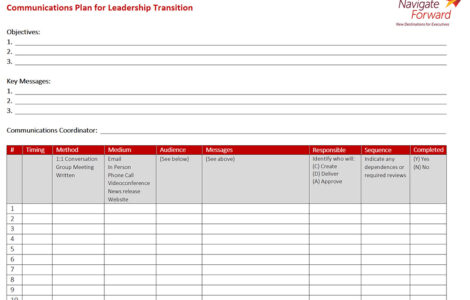Thinking about leaving your job?
It can happen for many reasons: Your company restructures and changes your duties. Your well-loved boss resigns. Maybe it’s just been a bad week. Whatever the circumstances, it’s important to make sure your next move is thoughtful, rather than reactionary.
An annual career checkup puts you in control. Before you say “take this job and shove it,” get prepared with these seven important steps.
1. Reflect on Your Reasons
Putting concrete reasons behind your departure will help you avoid similar situations in your next position. Start with uninterrupted time for reflection; self-discovery is key to finding a role that both meets your needs for income and provides fulfillment on a deeper level.
Consider:
- What type of work really energizes you?
- What drains you?
- What is the most important change you’re seeking in a new position?
Just like your yearly physical, an annual career checkup keeps your professional life in good health and ensures you’re ready for whatever comes next
2. Identify Your Superpowers
Wonder Woman and Superman aren’t the only ones with special talents; we all have amazing capabilities. Knowing yours will help you unlock new opportunities and stand out with hiring managers.
Think about the unique value that you can bring to an organization.
- Where do you make the biggest impact?
- What do colleagues count on you for?
- When others describe you, what would they say you are “made to do”?
Wonder Woman and Superman aren’t the only ones with special talents. Knowing yours will help you stand out with hiring managers.
3. Document Your Accomplishments
As you think back over the previous year (or the arc of your career), consider your wins.
- What accomplishments are you most proud of?
- What are the peak experiences that you want to duplicate going forward?
Write them down, paying particular attention to specific results and outcomes where you made a difference at your company. These milestones will form that heart of your job search story, resume and LinkedIn profile.
4. Find Your Purpose
Trying to find meaning and fulfilment in your professional life is important. The good news is that it is possible. It starts by figuring out where your personal passions intersect with the job market.
Think about:
- What type of work do you find meaningful?
- When you are totally absorbed and lose track of time, what are you doing?
- What do you want to contribute to the world?
Add meaning and fulfilment to your work by figuring out where your personal passions intersect with the job market
5. Create Your Professional Narrative
Recruiters, hiring managers and networking contacts need a clear picture of your unique strengths and ideal role—and all in just a few short sentences. Before you exit your current job, get prepared for the next one with a concise elevator pitch. Focus on these three items: what you do best, where you add value at an organization and your ideal next step. Leave the details to your resume and practice this summary so you make a memorable impression.
6. Update Your Resume and LinkedIn Profile
Once you’ve honed your pitch, make sure the same storyline flows through all your job search materials. Review and update your summary, career history, education, accomplishments and other sections on your resume and LinkedIn profile. (Make sure to adjust your online settings so proactive changes don’t notify your company or colleagues before you’re ready to depart.)
Before you exit your current job, get prepared for the next one with a concise elevator pitch
7. Visualize New Experiences
Finally, look back across these activities for recurring themes and “a-ha” moments that help you see your future and define next steps. It’s also smart to assess your financial needs so whatever avenue you choose, you can evaluate potential compensation realistically.
If you have trusted advisors or mentors in your network, consider seeking their confidential input. Working with an experienced career consultant is another option, particularly for senior leaders who are unsure of your next move, looking to pivot your skills to a new industry or ready to step up to board of director roles.
Consider a trusted advisor, mentor or career consultant to help you define your next steps
Just like your yearly physical, an annual career checkup keeps your professional life in good health and ensures you’re ready for whatever comes next. The more considered and clear you are, the more your friends, colleagues, family and professional network can help you achieve your goals.
Find your passion, path and place in the business community. Since 2008, Navigate Forward has worked one-on-one with senior executives to discover, define and land theirnext role. Learn more about our Executive Transition Services.



